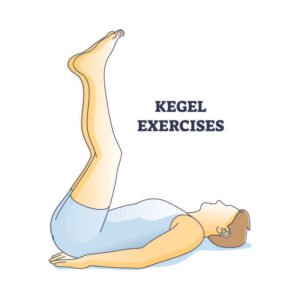Back pain is a prevalent and often debilitating condition that affects millions of people worldwide. From mild discomfort to chronic agony, back pain can significantly impact one’s quality of life, limiting mobility and productivity.
While conventional treatments such as pain medications and surgery are commonly prescribed, many individuals are turning to alternative medicine for relief.
alternative medicine for back pain, also known as complementary or integrative medicine, encompasses a diverse range of therapies and practices that aim to treat the whole person, addressing the physical, mental, and emotional aspects of health. In this article, we explore the efficacy of alternative medicine modalities in managing back pain and enhancing overall well-being.

Understanding Back Pain
Back pain can originate from various sources, including muscle strains, ligament sprains, herniated discs, spinal stenosis, and degenerative conditions like osteoarthritis. It can manifest as dull, aching discomfort, sharp shooting pain, or stiffness in the back, making everyday activities challenging.
Conventional treatments for back pain often focus on symptom management through pain-relieving medications, physical therapy, and, in severe cases, surgical intervention. However, these approaches may not address the underlying cause of the pain and can carry risks of side effects and complications.
Overview of Alternative Medicine
Alternative medicine offers a holistic approach to back pain management, emphasizing the interconnectedness of the body, mind, and spirit. Unlike conventional medicine, which primarily targets symptoms, alternative therapies aim to restore balance and promote natural healing mechanisms. By addressing the root cause of back pain and supporting the body’s innate ability to heal, alternative medicine modalities offer a gentler and often safer approach to pain relief.
Popular Alternative Medicine Modalities
Chiropractic Care
Chiropractic care is a non-invasive therapy that focuses on the diagnosis and treatment of musculoskeletal disorders, particularly those affecting the spine. Chiropractors use manual adjustments or manipulations to realign the spine, improve joint mobility, and alleviate nerve compression, which can contribute to back pain. Research suggests that chiropractic adjustments may be effective in reducing pain and improving function in individuals with acute and chronic back pain.
Acupuncture
Acupuncture is an ancient Chinese healing art that involves the insertion of thin needles into specific points on the body to stimulate energy flow and promote balance.
According to traditional Chinese medicine theory, imbalances in the body’s energy pathways, known as meridians, can lead to pain and illness. By stimulating acupuncture points, practitioners aim to restore harmony and relieve symptoms.
Clinical studies have shown that acupuncture may be beneficial for managing various types of pain, including back pain, by modulating pain signals and promoting the release of endorphins, the body’s natural painkillers.
Yoga and Pilates
Yoga and Pilates are mind-body exercises that emphasize controlled movements, breath awareness, and mindful relaxation. Both practices focus on improving flexibility, strength, and posture, which are essential for preventing and alleviating back pain. Yoga incorporates a variety of poses or asanas that target different muscle groups, including those in the back and core. Pilates, on the other hand, emphasizes core stability and alignment through precise movements performed on specialized equipment or mats. Research suggests that regular practice of yoga or Pilates can reduce back pain intensity, improve functional ability, and enhance overall well-being.
Massage Therapy
Massage therapy involves the manipulation of soft tissues, including muscles, tendons, and ligaments, to alleviate pain, tension, and stress. Various massage techniques, such as Swedish massage, deep tissue massage, and myofascial release, may be used to address specific musculoskeletal issues contributing to back pain.
Massage therapy can help improve circulation, relax tight muscles, and promote the release of endorphins, leading to pain relief and relaxation. Studies have shown that massage therapy can be effective in reducing chronic lower back pain and improving the range of motion in affected individuals.
Herbal Remedies and Supplements
Herbal remedies and dietary supplements are commonly used in alternative medicine for their purported anti-inflammatory, analgesic, and healing properties. Popular herbs and supplements for back pain include turmeric, ginger, devil’s claw, Boswellia, and glucosamine.
These natural remedies are believed to reduce inflammation, alleviate pain, and support joint health, although scientific evidence supporting their efficacy is limited.
It’s essential to consult with a healthcare professional before using herbal remedies or supplements, as they may interact with medications or have adverse effects in some individuals.
Mind-Body Approaches
In addition to physical therapies, mind-body approaches such as mindfulness meditation, guided imagery, and biofeedback can be valuable tools for managing back pain. These techniques promote relaxation, reduce stress, and enhance self-awareness, which can help individuals cope with pain more effectively.
alternative medicine for back pain and Mind-body practices are often integrated into comprehensive pain management programs to address the emotional and psychological aspects of chronic pain and improve overall quality of life.
Lifestyle Modifications
Making lifestyle modifications is crucial for preventing and managing back pain in the long term. Maintaining a healthy weight, staying physically active, practicing good posture, and using ergonomic furniture and equipment can reduce the risk of back pain and minimize its impact on daily life.
Incorporating regular exercise, such as walking, swimming, or cycling, into your routine can strengthen the muscles that support the spine and improve flexibility and mobility. Additionally, avoiding smoking and excessive alcohol consumption can promote spinal health and overall well-being.
alternative medicine for back pain and Safety and Considerations
While alternative medicine modalities offer promising options for back pain relief, it’s essential to approach them with caution and awareness.
Not all alternative therapies are suitable for everyone, and some may pose risks or contraindications, especially for individuals with certain medical conditions or injuries.
Before trying any alternative medicine treatment, it’s advisable to consult with a qualified healthcare professional or licensed practitioner who can assess your individual needs and recommend safe and effective options.
Additionally, be wary of misleading claims or unproven treatments that promise miraculous results without scientific evidence to support their efficacy.
alternative medicine for back pain and Alternative medicine offers a diverse range of therapies and practices that can complement conventional treatments for back pain.
From chiropractic care and acupuncture to yoga, Pilates, and massage therapy, there are numerous options available for individuals seeking natural and holistic approaches to pain relief and wellness.
By addressing the underlying causes of back pain and promoting the body’s innate healing mechanisms, alternative medicine modalities empower individuals to take an active role in their health and well-being.
However, it’s essential to approach alternative medicine with an open mind, informed decision-making, and guidance from qualified professionals to ensure safe and effective outcomes.
By integrating alternative medicine into comprehensive pain management strategies, individuals can experience lasting relief from back pain and improve their overall quality of life.
Read More:







